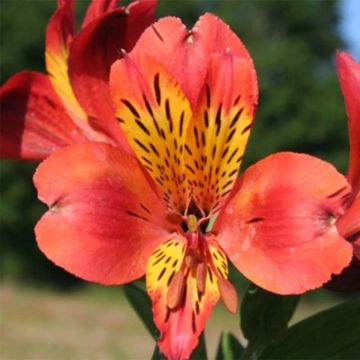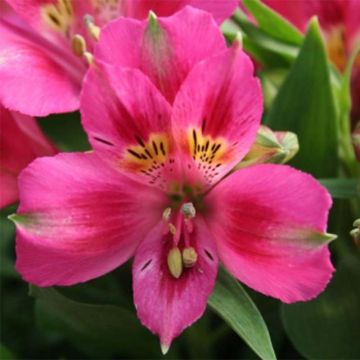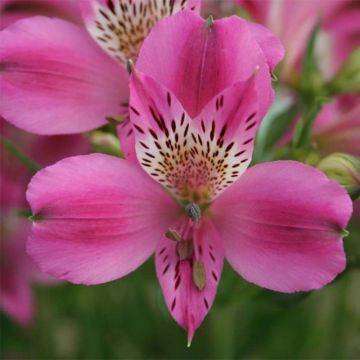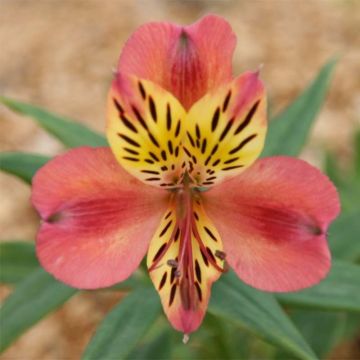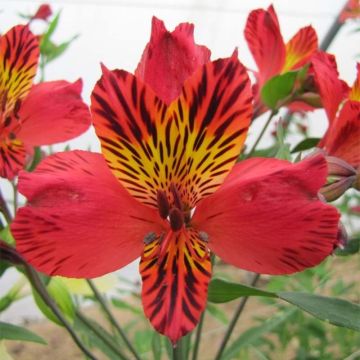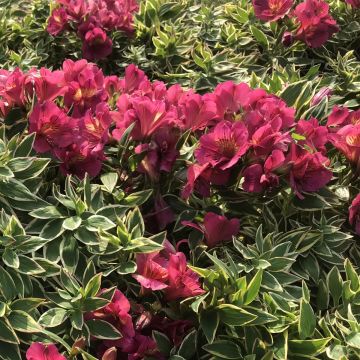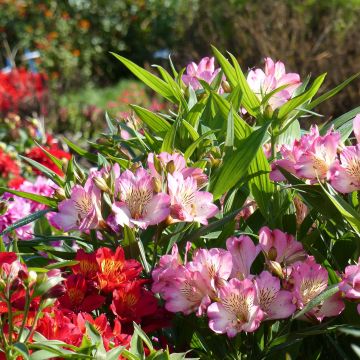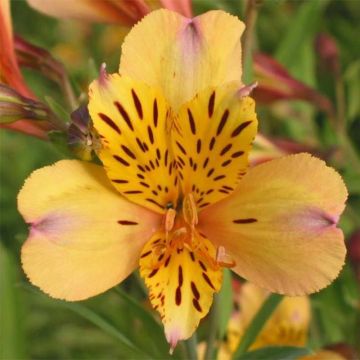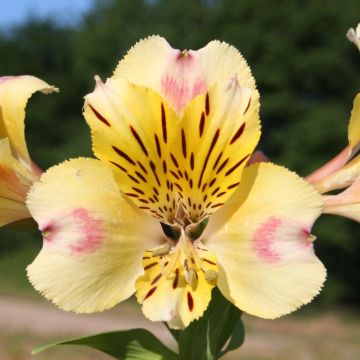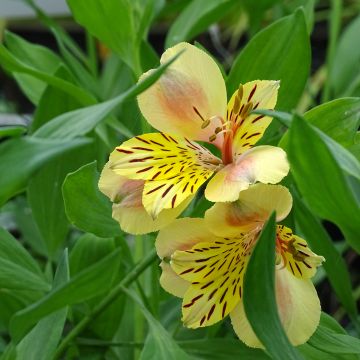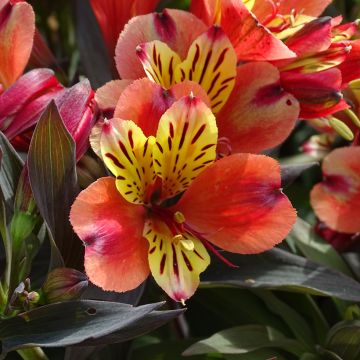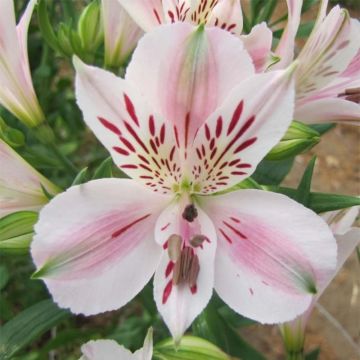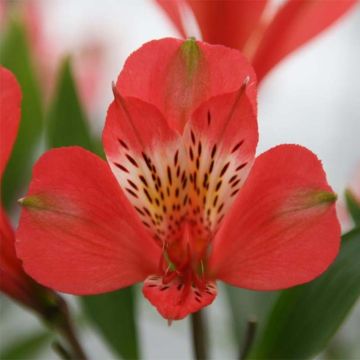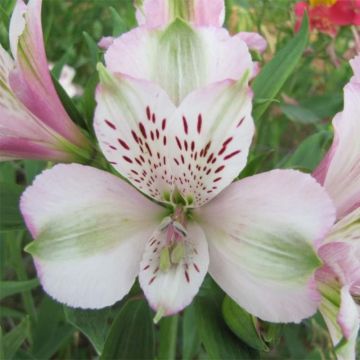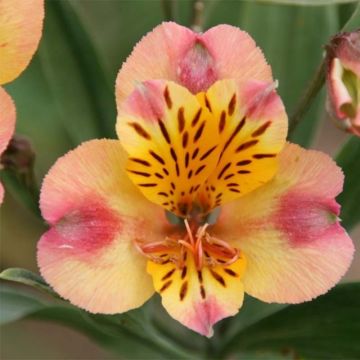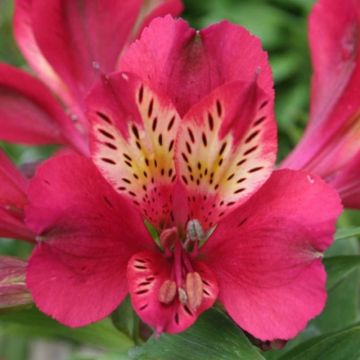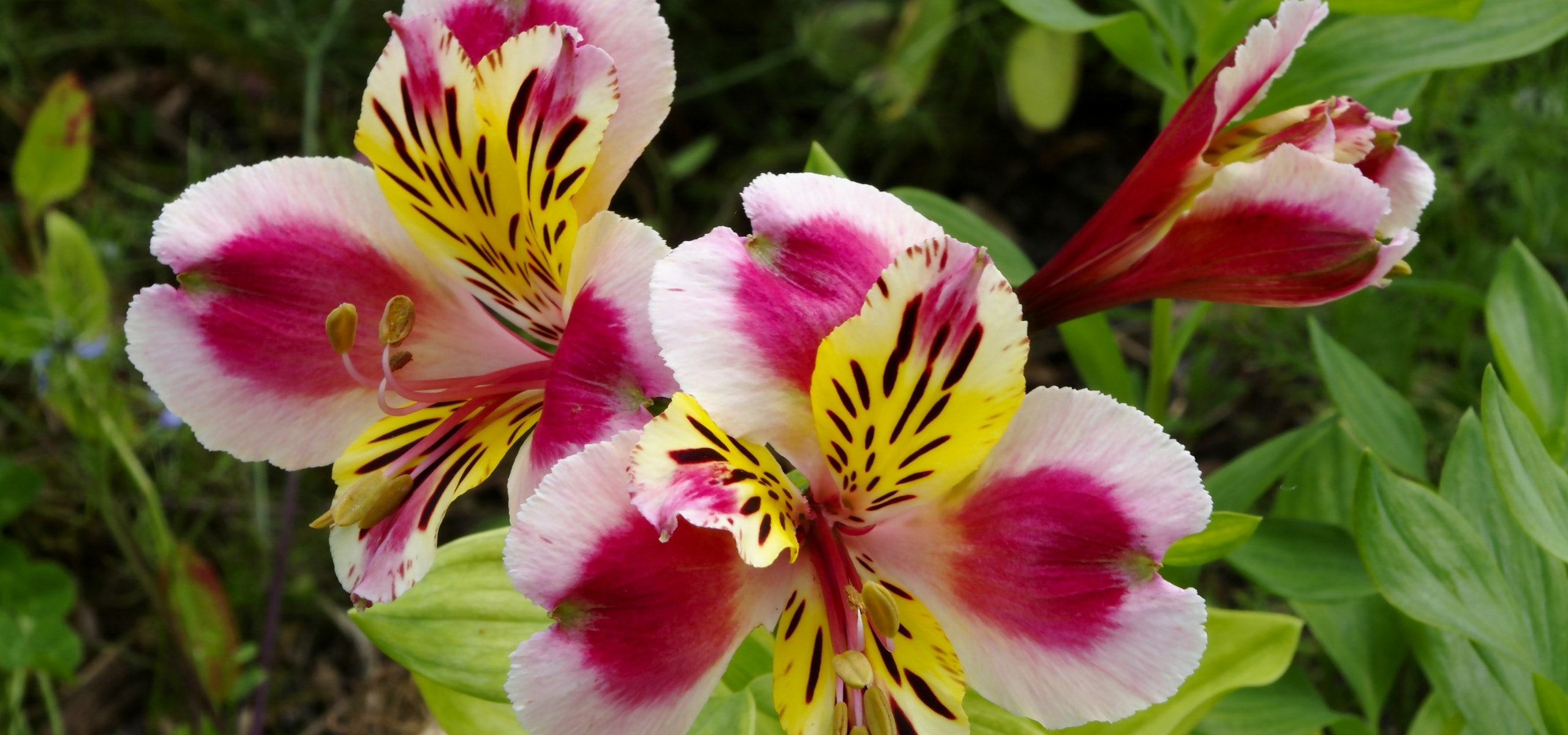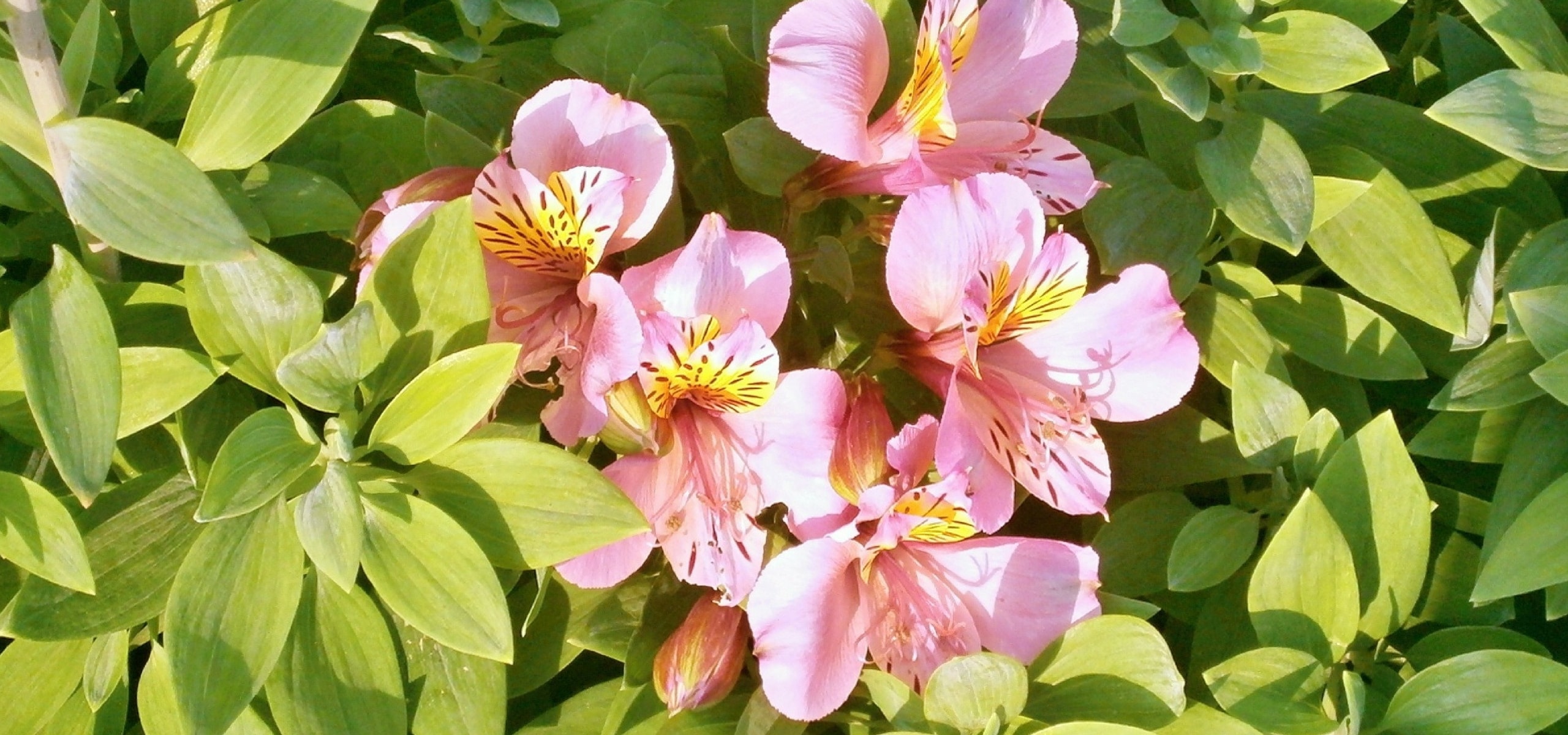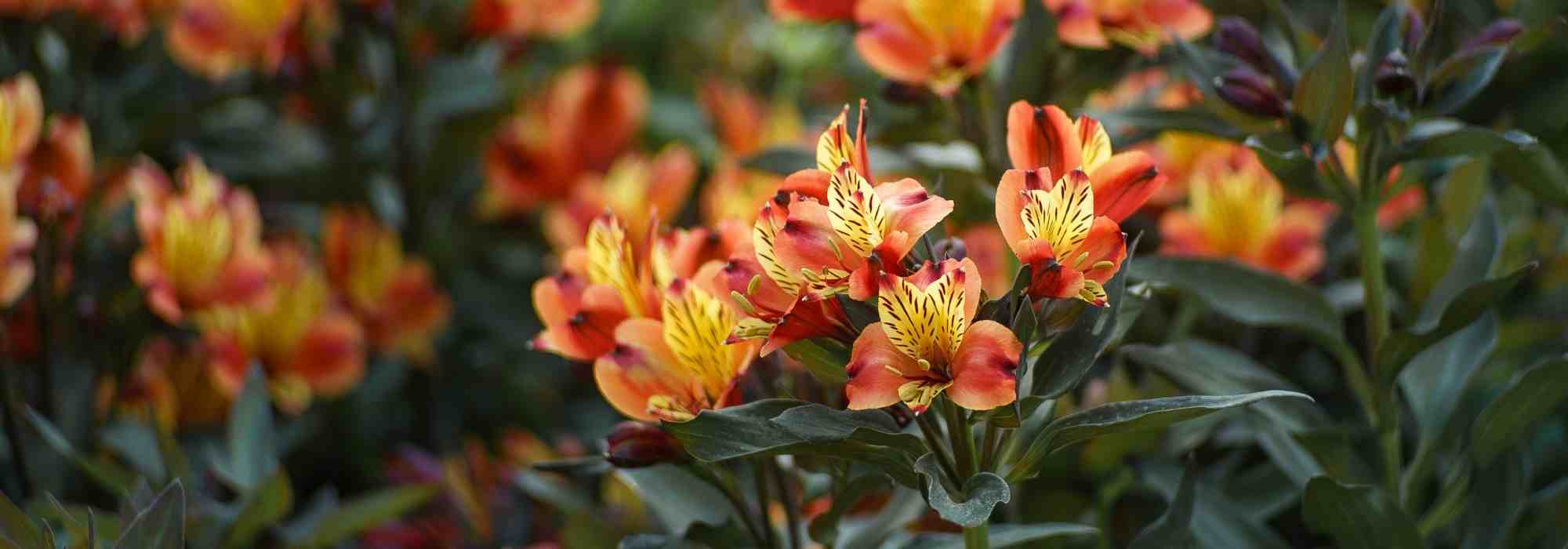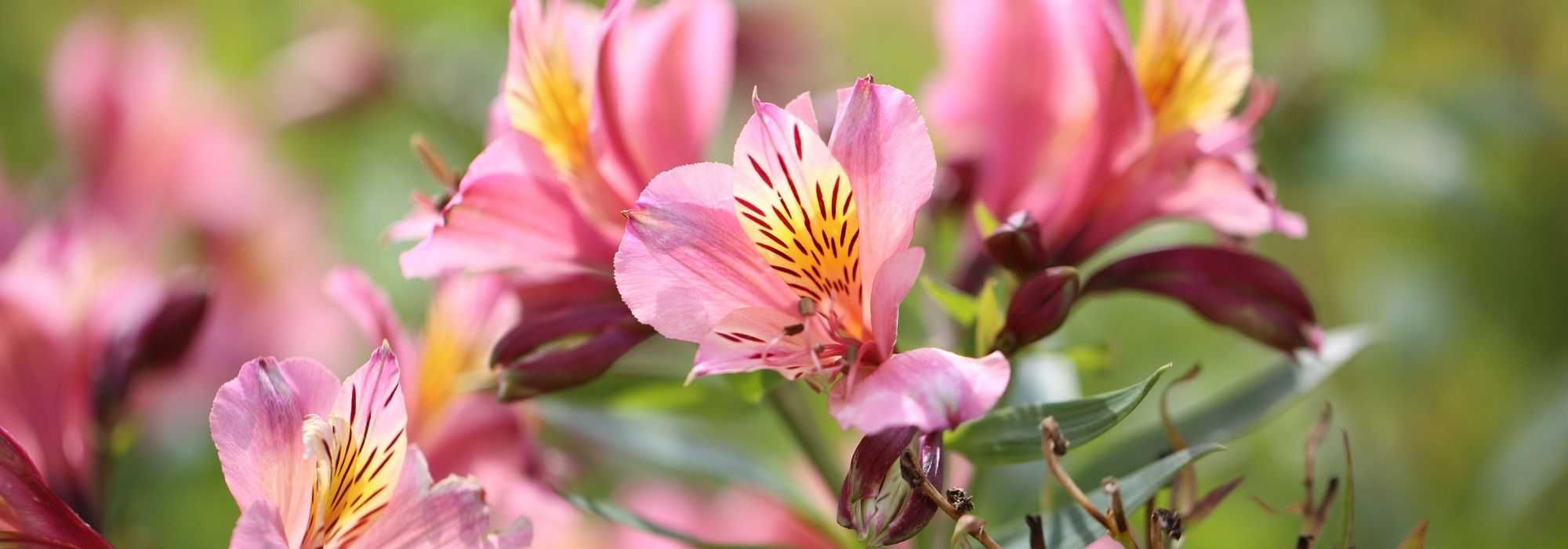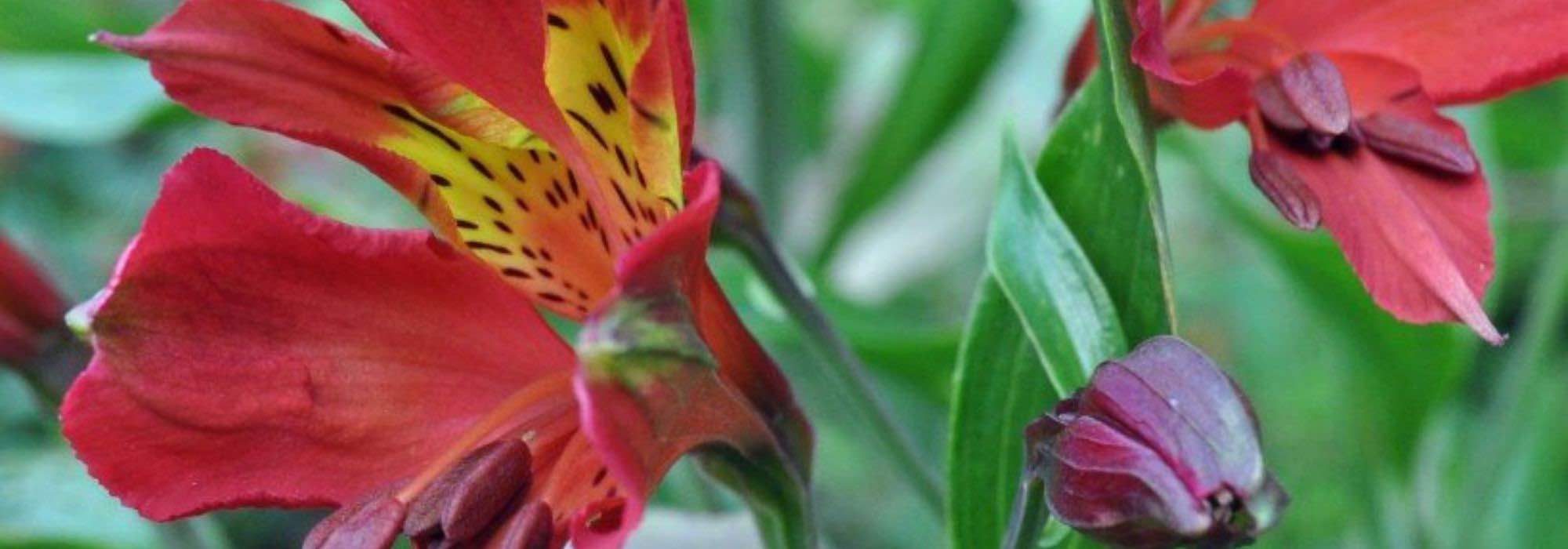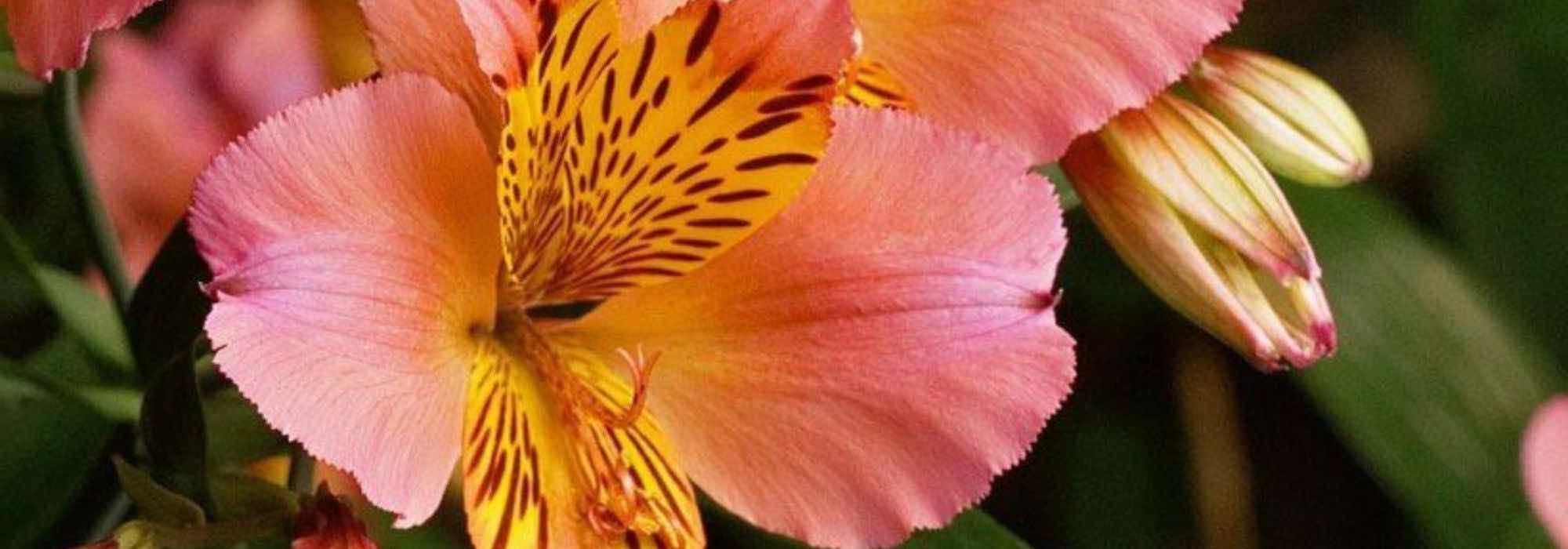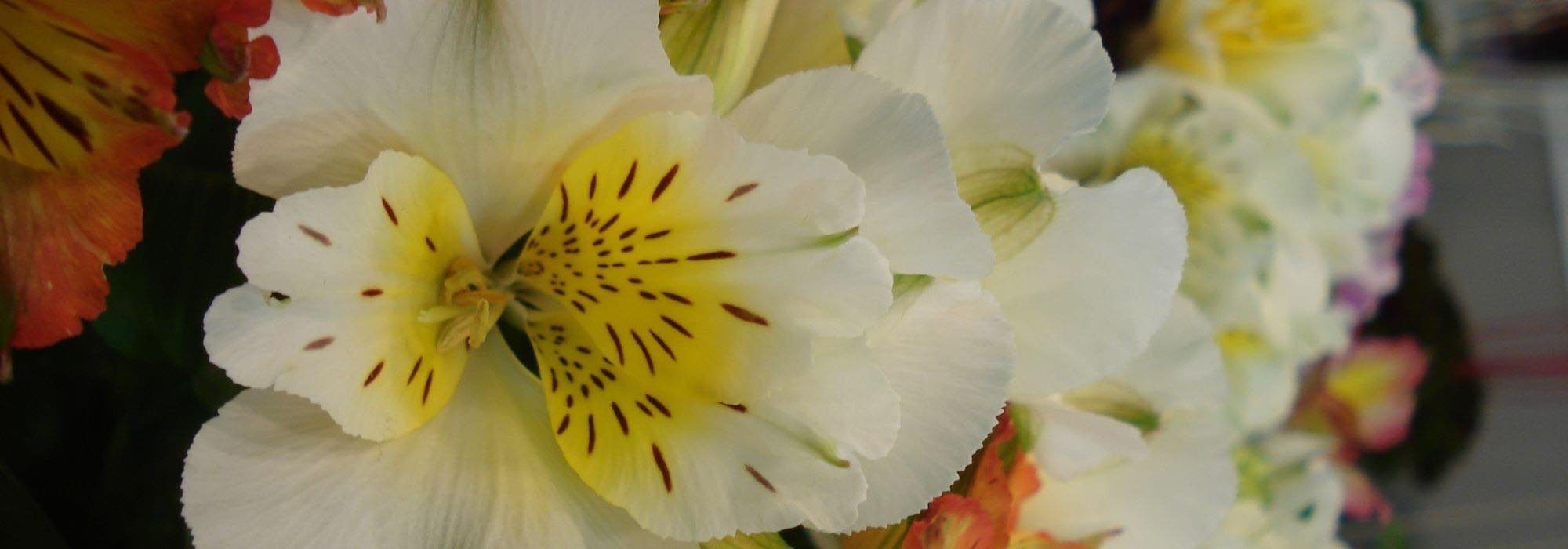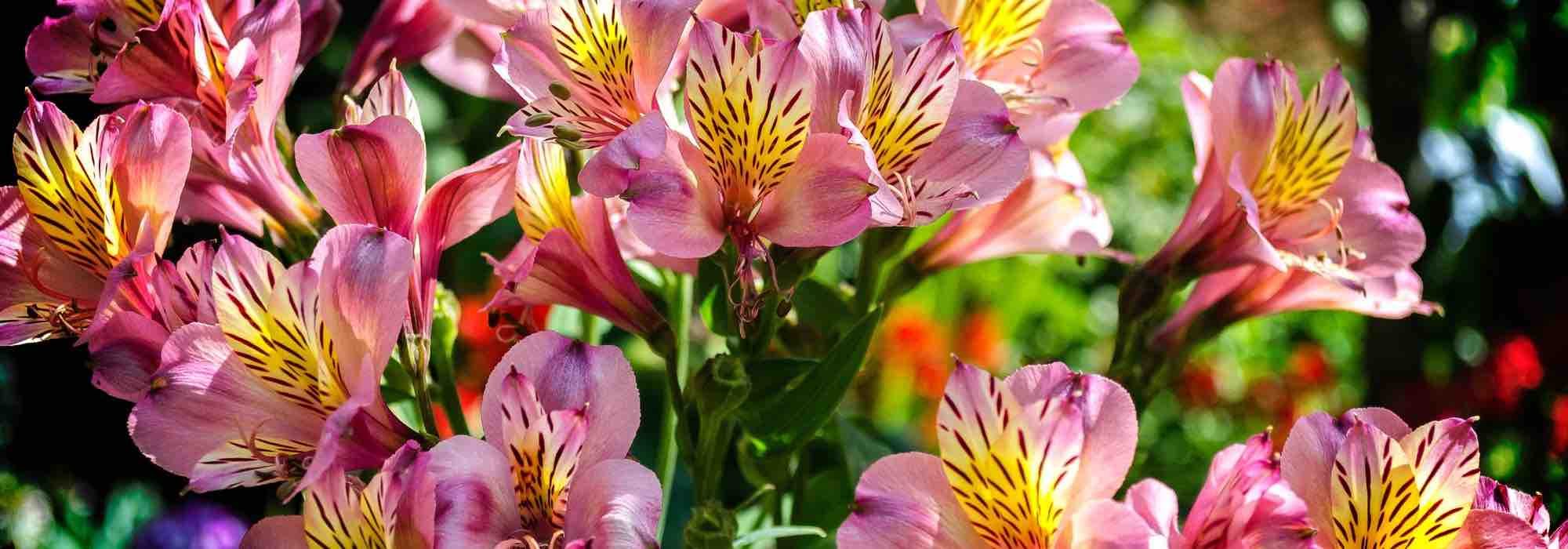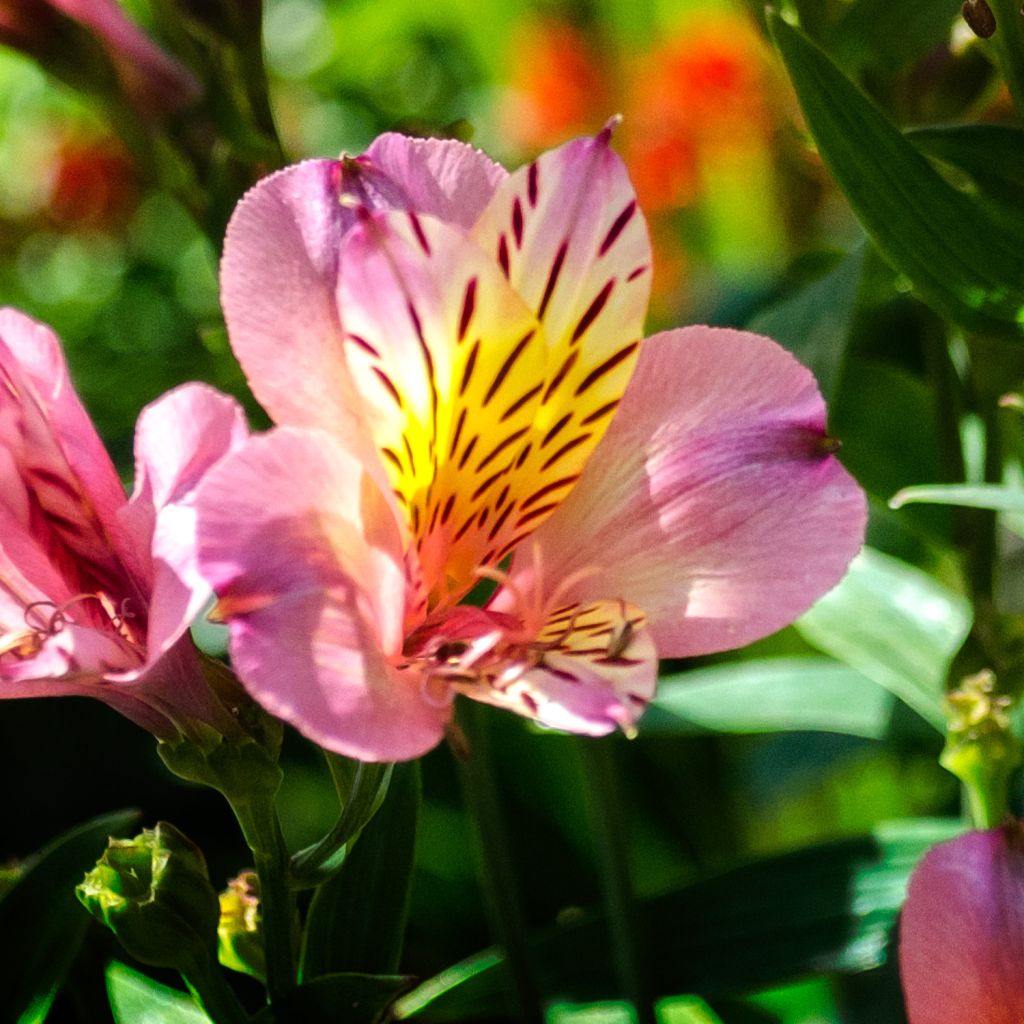

Alstroemeria ligtu-hybride
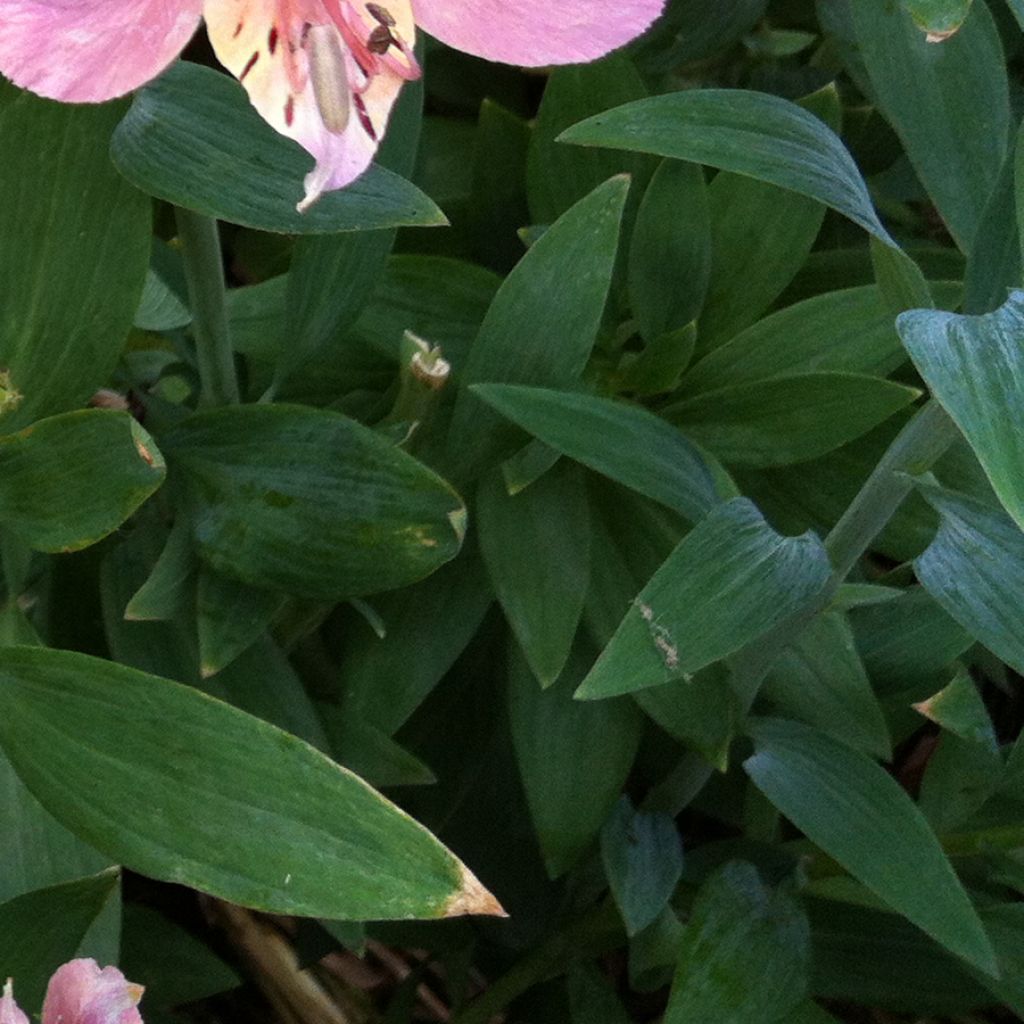

Alstroemeria ligtu-hybride
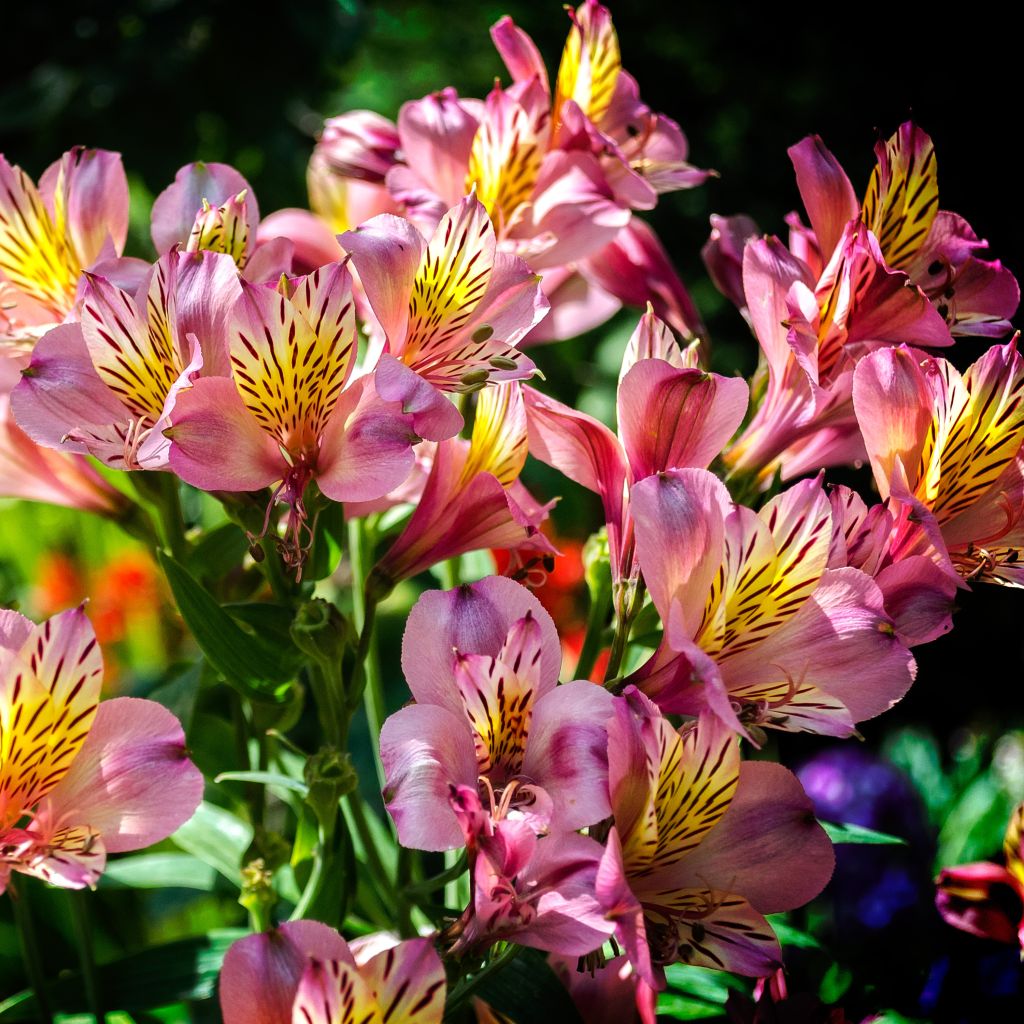

Alstroemeria ligtu-hybride
Alstroemeria Ligtu Hybrid
Alstroemeria ligtu x haemantha Ligtu Hybrid
Peruvian Lily, Lily of the Incas
The naked plant received was very feeble and I repotted it in anticipation of being able to plant it in the garden. Unfortunately, it continued to deteriorate and eventually died.
Eric, 06/08/2019
Special offer!
Receive a €20 voucher for any order over €90 (excluding delivery costs, credit notes, and plastic-free options)!
1- Add your favorite plants to your cart.
2- Once you have reached €90, confirm your order (you can even choose the delivery date!).
3- As soon as your order is shipped, you will receive an email containing your voucher code, valid for 3 months (90 days).
Your voucher is unique and can only be used once, for any order with a minimum value of €20, excluding delivery costs.
Can be combined with other current offers, non-divisible and non-refundable.
Why not try an alternative variety in stock?
View all →This plant carries a 12 months recovery warranty
More information
We guarantee the quality of our plants for a full growing cycle, and will replace at our expense any plant that fails to recover under normal climatic and planting conditions.
Does this plant fit my garden?
Set up your Plantfit profile →
Description
Alstromeria ligtu-hybrid, also known as Peruvian Lily, is a perennial plant that thrives in moist soil in a light woodland area. Its exotic-looking flowers come in various colours, but they are always stunningly beautiful. We offer a lovely selection with salmon-pink flowers adorned with small dark streaks. This hardy hybrid will faithfully reflower year after year and will naturalise in borders and rock gardens if the conditions are right. This plant blooms abundantly and produces gorgeous cut flowers and magnificent pots for the terrace or balcony.
The hybrid Alstroemeria ligtu are perennial plants belonging to the Alstroemeriaceae family, resulting from the cross-breeding of Alstroemeria haemantha and Alstroemeria ligtu, both of Chilean and Peruvian origin. These plants grow in nature on well-drained and rocky slopes of the Andes mountains, preferring slightly acidic soil. The plants quickly form large clumps consisting of robust and upright stems, with thin, sparsely leafed, slightly pubescent, grey-green leaves on their upper half. In spring and summer, starting from the second year of cultivation, these stems, averaging 60 cm (24in) in height, bear terminal umbels of open flowers composed of 6 non-symmetrical petals, variably speckled or striated. Their colours are a mix of pink and orange. They are bulbous plants with thick, fleshy roots that resemble asparagus claws. Fragile and brittle, they penetrate deeply into the soil, which should be loose and light to accommodate them. These plants reproduce easily by sowing, a technique that also avoids damaging the roots during transplantation.
The hybrid Alstroemeria ligtu can be temperamental and wither overnight if their environment is not suitable, or become invasive in the opposite case. Nonetheless, they provide wonderful flowers for bouquets. As such, you can plant them in the vegetable garden, in well-tilled and well-drained soil, or on a mound, which suits them perfectly. In these conditions, they can form large clumps that expand year after year. They are excellent plants for borders, rock gardens, pots, and containers.
Alstroemeria Ligtu Hybrid in pictures
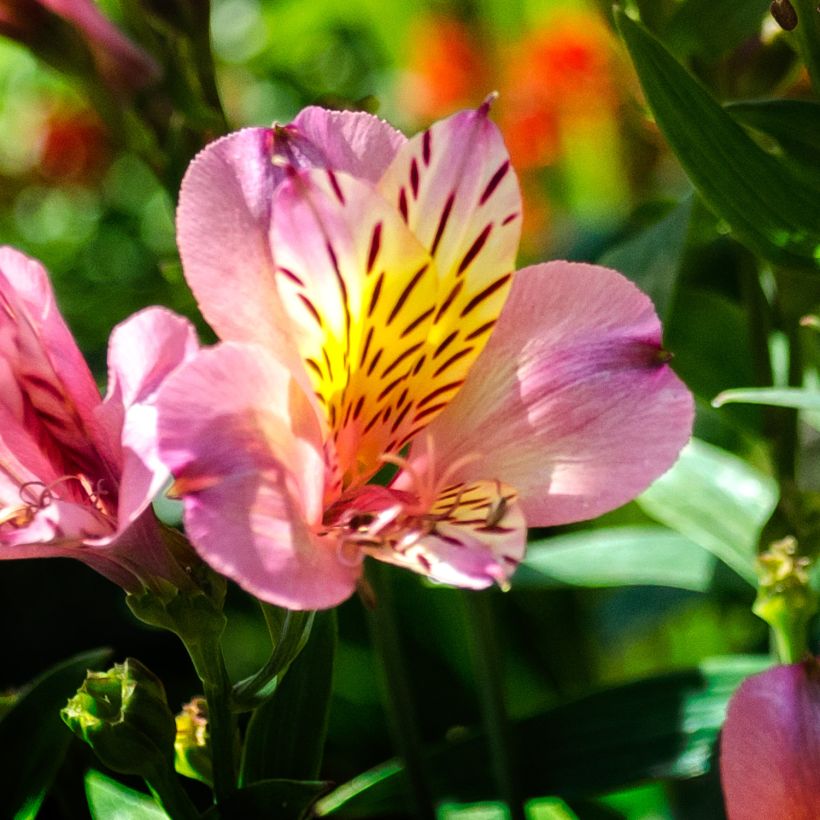

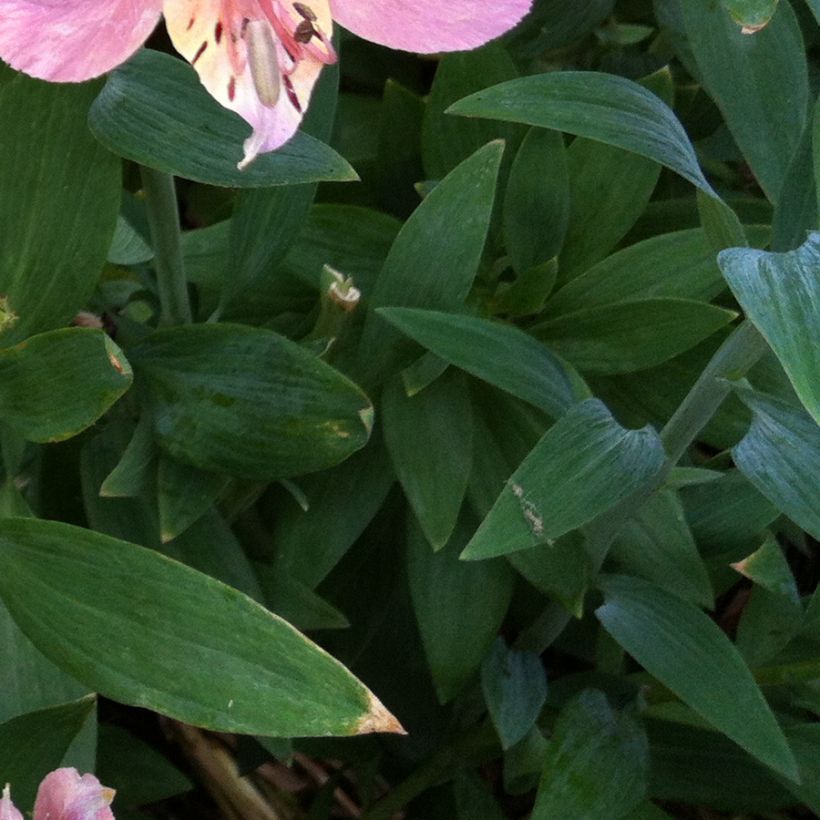

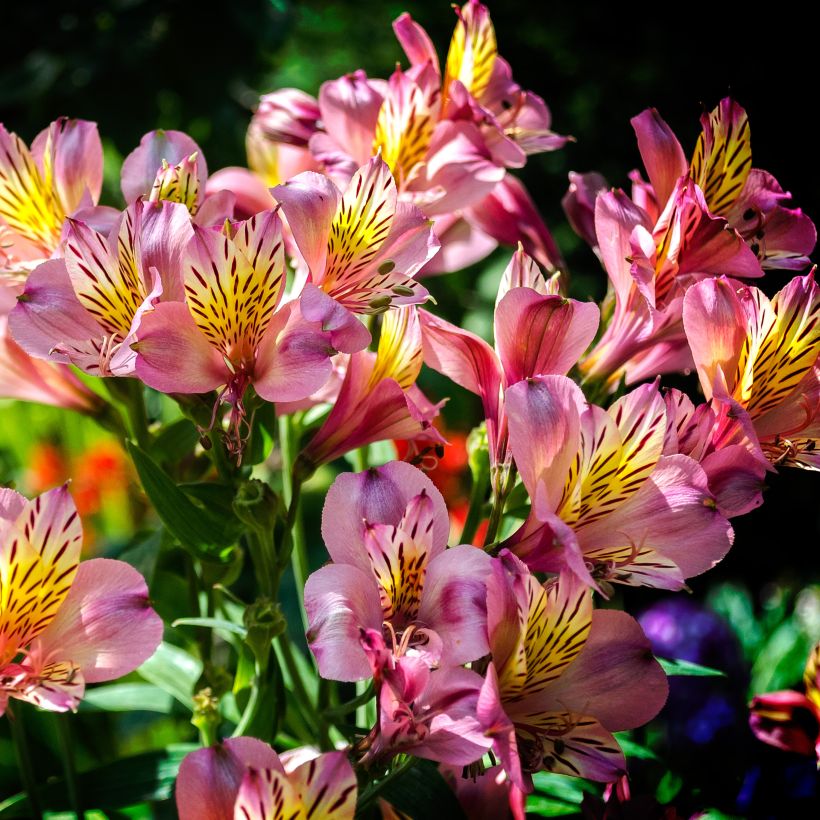

Flowering
Foliage
Plant habit
Botanical data
Alstroemeria
ligtu x haemantha
Ligtu Hybrid
Alstroemeriaceae
Peruvian Lily, Lily of the Incas
South America
Other Alstroemerias
View all →Planting and care
Alstroemerias prefer light, sandy or loamy soils that are well-draining and loose. In heavy and compact soil, add gravel, coarse sand, and compost. These plants are very sensitive to growing conditions but are "indestructible" once the right spot is found. They are not tolerant of excessive limestone. These plants are fairly drought-resistant. Morning sun suits them particularly well as the harsh sunlight from the south and west can scorch their foliage and flowers. Protect young plants from slugs.
Planting period
Intended location
Care
Planting & care advice
-
, onOrder confirmed
Reply from on Promesse de fleurs
Haven't found what you were looking for?
Hardiness is the lowest winter temperature a plant can endure without suffering serious damage or even dying. However, hardiness is affected by location (a sheltered area, such as a patio), protection (winter cover) and soil type (hardiness is improved by well-drained soil).

Photo Sharing Terms & Conditions
In order to encourage gardeners to interact and share their experiences, Promesse de fleurs offers various media enabling content to be uploaded onto its Site - in particular via the ‘Photo sharing’ module.
The User agrees to refrain from:
- Posting any content that is illegal, prejudicial, insulting, racist, inciteful to hatred, revisionist, contrary to public decency, that infringes on privacy or on the privacy rights of third parties, in particular the publicity rights of persons and goods, intellectual property rights, or the right to privacy.
- Submitting content on behalf of a third party;
- Impersonate the identity of a third party and/or publish any personal information about a third party;
In general, the User undertakes to refrain from any unethical behaviour.
All Content (in particular text, comments, files, images, photos, videos, creative works, etc.), which may be subject to property or intellectual property rights, image or other private rights, shall remain the property of the User, subject to the limited rights granted by the terms of the licence granted by Promesse de fleurs as stated below. Users are at liberty to publish or not to publish such Content on the Site, notably via the ‘Photo Sharing’ facility, and accept that this Content shall be made public and freely accessible, notably on the Internet.
Users further acknowledge, undertake to have ,and guarantee that they hold all necessary rights and permissions to publish such material on the Site, in particular with regard to the legislation in force pertaining to any privacy, property, intellectual property, image, or contractual rights, or rights of any other nature. By publishing such Content on the Site, Users acknowledge accepting full liability as publishers of the Content within the meaning of the law, and grant Promesse de fleurs, free of charge, an inclusive, worldwide licence for the said Content for the entire duration of its publication, including all reproduction, representation, up/downloading, displaying, performing, transmission, and storage rights.
Users also grant permission for their name to be linked to the Content and accept that this link may not always be made available.
By engaging in posting material, Users consent to their Content becoming automatically accessible on the Internet, in particular on other sites and/or blogs and/or web pages of the Promesse de fleurs site, including in particular social pages and the Promesse de fleurs catalogue.
Users may secure the removal of entrusted content free of charge by issuing a simple request via our contact form.
The flowering period indicated on our website applies to countries and regions located in USDA zone 8 (France, the United Kingdom, Ireland, the Netherlands, etc.)
It will vary according to where you live:
- In zones 9 to 10 (Italy, Spain, Greece, etc.), flowering will occur about 2 to 4 weeks earlier.
- In zones 6 to 7 (Germany, Poland, Slovenia, and lower mountainous regions), flowering will be delayed by 2 to 3 weeks.
- In zone 5 (Central Europe, Scandinavia), blooming will be delayed by 3 to 5 weeks.
In temperate climates, pruning of spring-flowering shrubs (forsythia, spireas, etc.) should be done just after flowering.
Pruning of summer-flowering shrubs (Indian Lilac, Perovskia, etc.) can be done in winter or spring.
In cold regions as well as with frost-sensitive plants, avoid pruning too early when severe frosts may still occur.
The planting period indicated on our website applies to countries and regions located in USDA zone 8 (France, United Kingdom, Ireland, Netherlands).
It will vary according to where you live:
- In Mediterranean zones (Marseille, Madrid, Milan, etc.), autumn and winter are the best planting periods.
- In continental zones (Strasbourg, Munich, Vienna, etc.), delay planting by 2 to 3 weeks in spring and bring it forward by 2 to 4 weeks in autumn.
- In mountainous regions (the Alps, Pyrenees, Carpathians, etc.), it is best to plant in late spring (May-June) or late summer (August-September).
The harvesting period indicated on our website applies to countries and regions in USDA zone 8 (France, England, Ireland, the Netherlands).
In colder areas (Scandinavia, Poland, Austria...) fruit and vegetable harvests are likely to be delayed by 3-4 weeks.
In warmer areas (Italy, Spain, Greece, etc.), harvesting will probably take place earlier, depending on weather conditions.
The sowing periods indicated on our website apply to countries and regions within USDA Zone 8 (France, UK, Ireland, Netherlands).
In colder areas (Scandinavia, Poland, Austria...), delay any outdoor sowing by 3-4 weeks, or sow under glass.
In warmer climes (Italy, Spain, Greece, etc.), bring outdoor sowing forward by a few weeks.






























